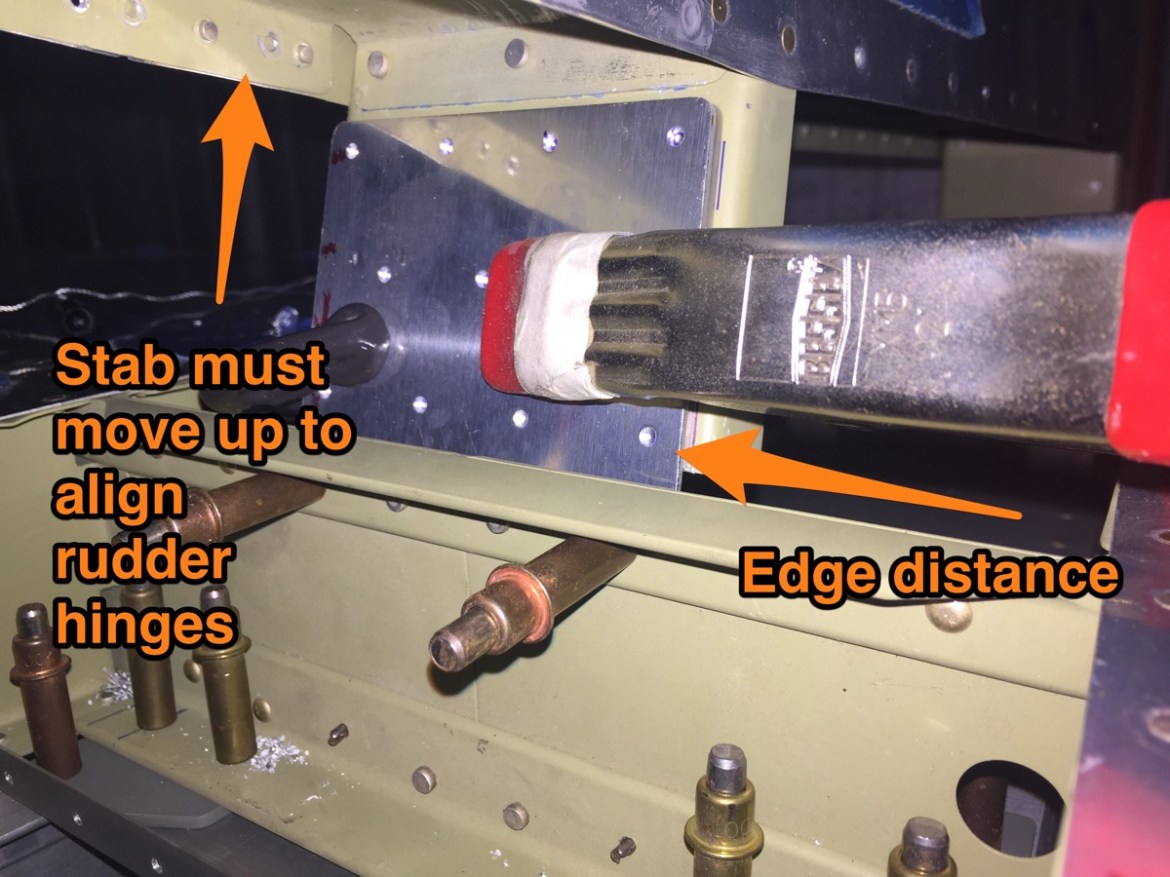Fuselage 28 – Vert Stab Attachment
Today it was time to match drill the front spar of the vertical stabilizer to the angle attachment mounting to the horizontal stabilizer. To do this, you use two strings to the center line of the fuselage and equidistant from the aft portion of the vertical stab. Equal measurements near the front of the stab ensure it is centered. 




Next, you need to ensure that the vertical stabilizer is true front to aft. The idea hear is to ensure the hinge points for the rudder are in alignment to avoid binding. There are two techniques. First you can use a straight edge provided you have one long enough, or you can use the plumb bob method. I have done the latter. 


Once I got the rudder hinges aligned, it was apparent I had another problem. The amount of lift required on the forward part of the stab was going to create edge distance problems for the forward spar. What the heck? Literally two steps ago, Van’s had me trim the front spar length. If I had trimmed a little less, there would have been no problem. Consulting the forums, this appears to be a common problem. So, when you go to trim the front spar, trim less than Van’s calls for. You can always take more off, but its hard to put back.

The solution was to create a new angle. Here you can see the original angle on the left, and the stencil for the new angle on the right. 
Here is the new angle next to the old angle. You can see the old angle is slightly taller, about 3/16″. The original is pre-drilled, whereas my new one was not. To accomplish the match drilling, I made a quick drill template by clamping some scrap to the original and match drilling.  Here is the new angle in place with the drill template on top. I needed to double check everything was true both to the centerline and the rudder hinges. Then it was time to drill.
Here is the new angle in place with the drill template on top. I needed to double check everything was true both to the centerline and the rudder hinges. Then it was time to drill.







































